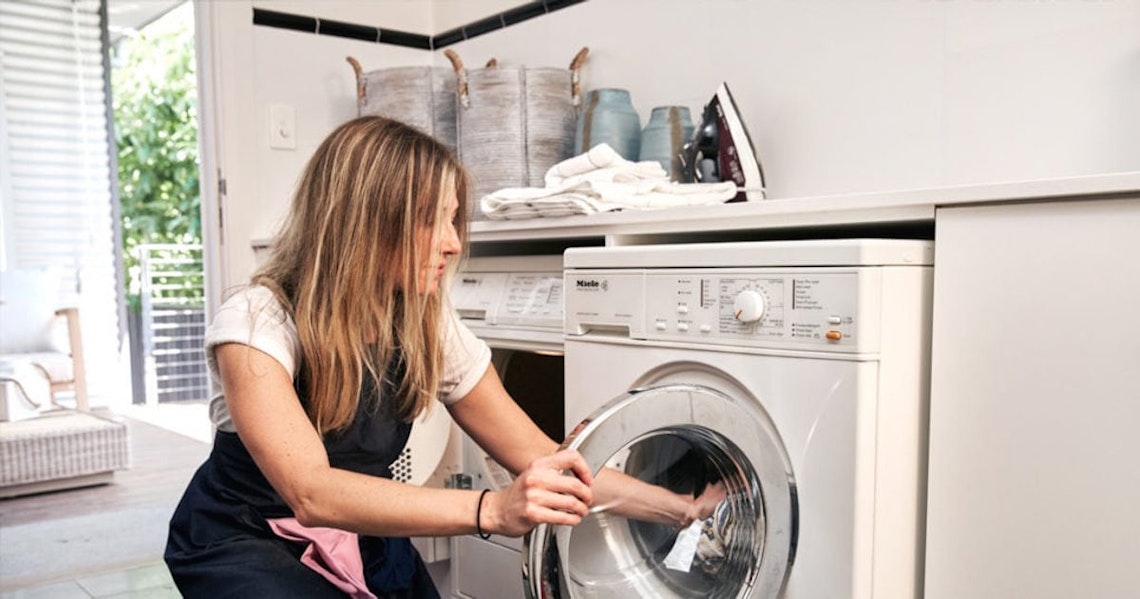
How to operate a cleaning business during a pandemic
Before the current COVID-19 outbreak, your customers relied on you to make their homes and businesses clean regularly. For many, a service like yours was “nice to have.” Clean locations are considerably more inviting and, in the case of businesses, more professional.
Before COVID-19, the health benefits associated with clean spaces were assumed but usually thought of as a secondary benefit. There was very little discussion about viruses, what strength of disinfectant should be used, or what a decontaminating process entails between client calls or at the end of the day.
Now, with the onslaught of the global pandemic, your team is doing much more than cleaning – you’re establishing a line of defense against an easily transmitted, airborne virus. If you’re still working as a cleaning professional during this pandemic, your practices must be held to the highest standards, and you also must reassure your customers that it’s okay for your team to visit and clean. Overnight, your cleaning business has become an essential part of flattening the virus’s contagion curve.
As a cleaning professional, your focus is on perfecting your customer’s home or office while you’re there. You have little influence over their habits and behavior when it comes to their bringing in outside germs and other harmful contaminants. How your customers handle handwashing, doing laundry, food hygiene, disposing of waste, and caring for those who are ill are areas that you have little control over.
Your primary responsibility is for your team – their performance and overall safety. You can control how well-prepared they and their equipment are before heading out for a day of cleaning. You can also control how carefully and efficiently they work, as well as implement best practices at the end of the day.
You’re not just at work – you’re at the front line
Let’s first get on the same page about the new normal that is being defined globally. The COVID-19 outbreak has already affected millions. While precautionary measures are starting to show signs of promise, many countries have yet to reach their apex of infected patients. Most who will get infected are expected to recuperate. Yet, it is still a very serious and life-threatening situation – one that could last for several more months.
The virus itself is extremely difficult to track as symptoms don’t appear to manifest themselves until well after an individual is infected – up to 14 days in many cases. Many asymptomatic patients appear to be perfectly healthy until they are tested or begin to show early signs of symptoms. COVID-19 is an airborne pathogen. Meaning, you don’t have to be physically touched to become infected. The virus itself can be inhaled — thus, the importance of surgical masks. The virus can also be transferred from a contaminated surface where it can survive for 10 days to two weeks.
Whether your team is responsible for cleaning a business or private residence, your objectives should always be the same: remove the virus with disinfectants, keep your team and your clients safe from infection, and keep the virus from spreading to others outside.
Breaking the “Viral Chain of Infection”
Prescribing social distancing seems to be slowing the spread of the virus. Keeping a safe distance from your customers is a good practice for everyone involved, but it doesn’t stop the pandemic in its tracks.
Your team’s cleaning practices can help prevent the spread of the virus by breaking the chain of infection at any one of these links:
1. The Source
The problem: Someone or something, like food or a package, can carry the virus into a house or business.
The solution: Keep infected people away from others. Again, practice social distancing and avoid interactions with new individuals. Carefully wash and handle all types of food and wipe down any newly introduced packages or other items.
2. Transmission Points
The problem: A contaminated person, a soiled tissue or any item that has been personally used by someone could all be places where the virus is still living and easily be transmitted.
The solution: Clean and disinfect everywhere. Without creating panic, if you believe that an object or surface may be infected, assume that it is. While it may not always be the case, this is still the safest route during this time of the pandemic.
3. Vulnerable Individuals
The problem: Age and illness make some people considerably more susceptible to being infected by COVID-19 than others. This is especially true of individuals who are undergoing treatments like chemotherapy or who require feeding tubes or IVs. These vulnerable individuals are those who are most likely to not recuperate from this infection.
The solution: Protection is critical here – for both you and the vulnerable individual. Make certain that your team is wearing recommended apparel, such as face masks. If they are not wearing gloves make sure they are frequently and thoroughly washing their hands.
Targeted Cleaning
To effectively break the viral chain of infection, considerable emphasis must be placed on the hands, as well as objects and surfaces that have regular hand contact. This is referred to as targeted hygienic cleaning and includes almost any surface, cleaning cloths, apparel, and cleaning equipment.
The objective here is to eliminate as many germs as possible from critical surfaces and objects. In most cases, a hygienic clean surface can be achieved with soap – or an effective detergent – and water. It is important to stress that simply removing dirt is only part of effective cleaning. Thorough rinsing and drying are also required.
Use the right products
Keep in mind that not all cleaning products are the same. Some that are labeled “sanitizers” only reduce germs – but do not completely kill and eliminate them. Instead, use products that are labeled “disinfectants” as they will kill germs.
If the surface you are cleaning is considerably dirty, first give it a good general cleaning with soap and water and then thoroughly clean it with a disinfectant. When shopping for a disinfectant, look for those that are registered with the EPA – this should be evident on the product’s label.
If you need to disinfect something and are without product, a mixture of one cup of household bleach to 5 gallons of water will work. But keep in mind that this solution is not ideal for many areas as bleach can damage many surfaces and be extremely harmful to human touch. Take great care if you choose this route.
Follow Standard Precautions
Healthcare workers follow something called “Standard Precautions” every day as a part of their daily regimen. This practice is designed to protect everyone involved – especially the patient and their caregiver. It assumes that every skin-to-skin touch or interaction with any type of bodily fluid could transmit infection.
During this time of the COVID-19 pandemic, Standard Precautions are an excellent practice to follow by your cleaning team as well. Use nitrile gloves (not latex, as many can be allergic to them) along with goggles or face shields when cleaning high-germ areas such as bathrooms and kitchens. Frequently change these protective items with fresh ones, too.
Pay special attention to cleaning toilet handles, seats and lids, as well as refrigerator handles. In these areas, Standard Precautions would recommend that a thorough initial cleaning be done using a detergent – followed by a second cleaning using an EPA-recommended disinfectant.
Everyday Objects
As mentioned previously, the COVID-19 virus can live for as long as two weeks on almost any surface. While bathrooms and kitchens routinely require extra attention as they are considered high-germ areas, special cleaning practices must also be made to everyday objects that are frequently touched. This includes faucet handles, doorknobs, telephones, keyboards, elevator buttons, office equipment (e.g., copy machines and staplers), and light switches.
Of course, this is only a partial list as there are many more high-touch surfaces that your team will need to address, depending on the home or business they are cleaning. Again, instruct them to be proactive – assume a surface is infected and needs a thorough cleaning and disinfecting.
Equipment
It’s also important to stress to your team that the equipment they’re using will inevitably become contaminated throughout a single job. This puts both your team and business at risk as it creates an opportunity for cross-contamination.
To prevent this and halt the spread of the virus, your used cleaning cloths and equipment must always be hygienically cleaned after every job. Do this as quickly as possible as the virus will only continue to multiply on damp, contaminated equipment. Everything from brushes to mops can become reservoirs for germs.
- Cloths and mop heads can be effectively cleaned in a washing machine as the hot setting is potent enough to kill the microbes.
- Brushes, including vacuum attachments, can be cleaned using detergent and warm water. Rinse with very hot water and leave the brush heads up to dry.
- Non-detachable mops should be cleaned with detergent and warm water, then rinsed with a disinfecting solution (or bleach solution). Wring out the mop until it is as dry as possible and then leave it to air dry with the head facing upward.
- Buckets should also be cleaned in detergent and warm water. Then, rinse them with a disinfecting solution – again, the bleach solution here is fine as well. Leave the bucket upside down to air dry.
Instruct your team to always wear protective gloves and eyewear when cleaning their equipment – especially when handling the bleach solution. Also, the gloves that your team wears to protect themselves will inevitably become contaminated.
Additional care for your team
Protecting your employees from their job sites and equipment is one thing. It’s also important to protect your team from each other if you’re providing cleaning services in groups of two or more.
If an employee begins to show flu-like symptoms, immediately send them home and make them stay home. Be encouraging to them along with the rest of your team. While it may be difficult to operate with one less person for the balance of the day, it would be disastrous for your business should your entire team suddenly become infected.
As hand washing is recommended throughout the day, make sure that every sink at your business has an ample supply of soap and paper towels. Antibacterial soaps aren’t necessary – just basic soap and water will do the job here. Remind everyone that effective hand washing requires at least 20 seconds of a good thorough scrubbing. Also, place hand sanitizers at multiple locations throughout your business to help remind your employees about the importance of hand hygiene during this pandemic.
Many of these products – such as gloves, soap, and disinfectants – have extremely long shelf lives. While it’s important to not hoard inventory, it’s okay to purchase an extra amount in the event your store or supplier runs out. Also, if you rely on purchasing any of these items at a traditional grocery store and they are out, many home supply chains like Home Depot and Lowes regularly carry lines of cleaning products and equipment.
It’s difficult to estimate how long this COVID-19 pandemic will last. However, you can think of this challenging time as an opportunity to encourage and uplift your employees to come together. Remind them of the incredibly important role they’re performing during this time and how vital they are in the eyes of your customers and the general public.
While some of these practices may seem extreme, hopefully, they will become second nature to your team in little time. And once this pandemic has subsided, consider continuing with these best practices – to the benefit of your customers, employees, and future business.
For the latest information regarding the COVID-19 pandemic, as well as additional hygiene guidance, please visit the CDC’s site.
Editor’s note: At Invoice2go, a Bill.com company, we make every effort to bring you the most current information that’s both relevant and helpful to you and your business. As the COVID-19 pandemic is still unfolding, please check back for updated articles. Thank you.
Related Articles

How to accept credit card payments on Invoice2go in 3 simple steps

Accept payments online via Apple Pay and Google Pay

Must-not-miss write-offs as you wrap up 2022 year-end finances

5 ways accepting credit and debit card payments helps your business stay resilient

4 easy ways to increase cash flow today

What is Small Business Saturday and why is it important?
The features and surprising benefits of a well-designed packing slip
